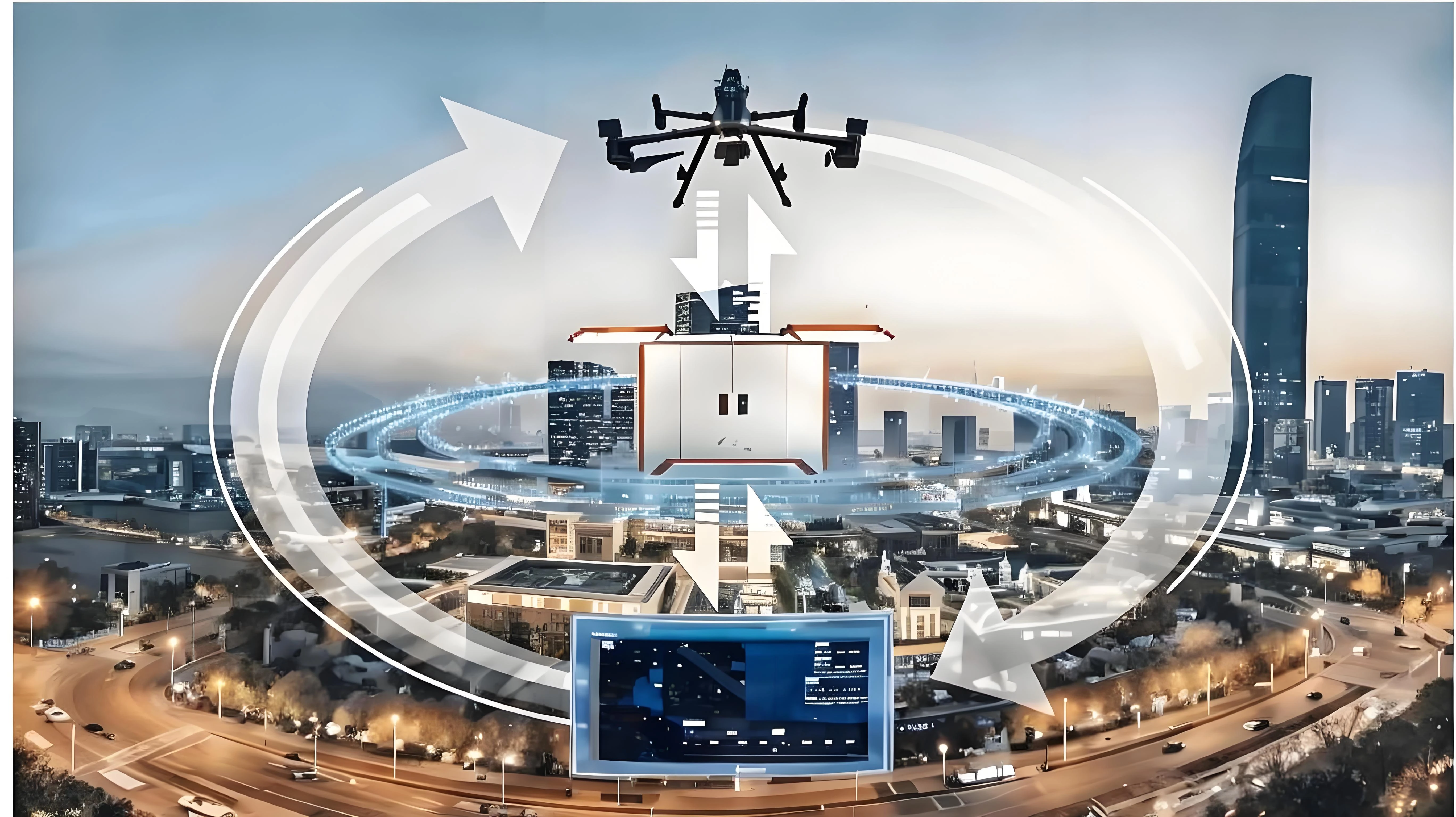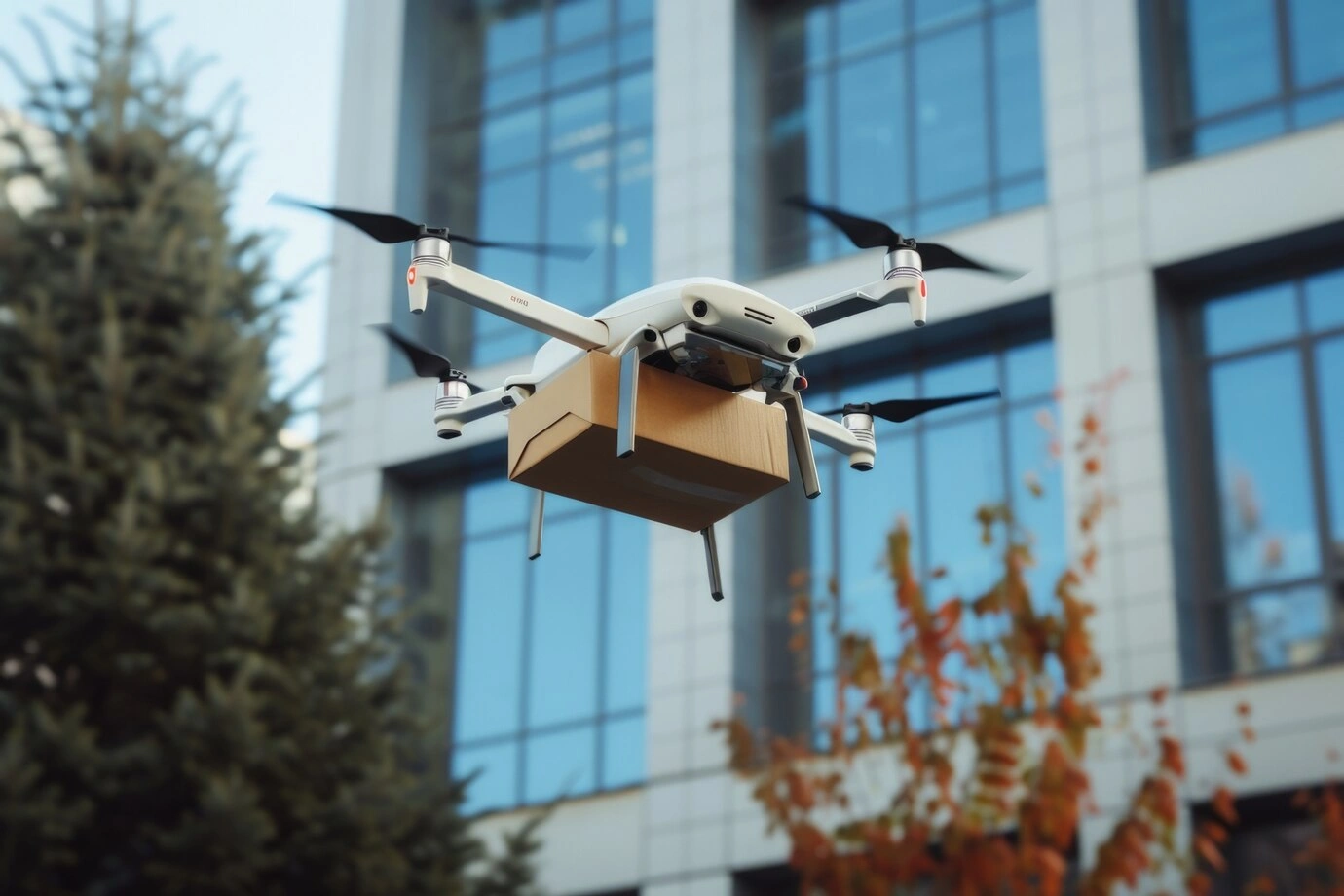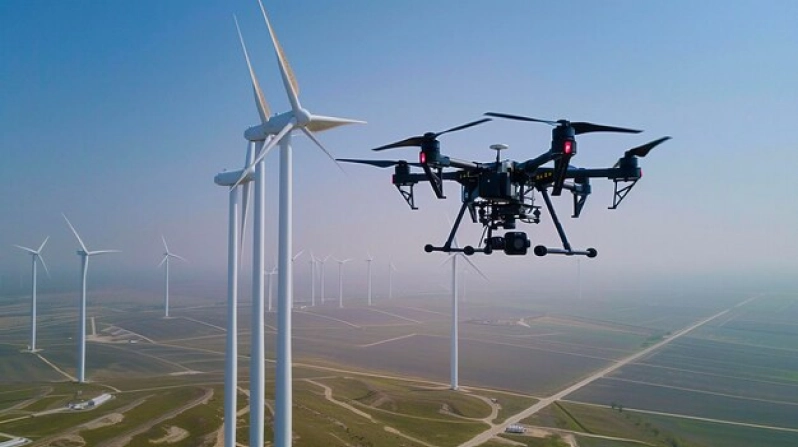In our daily lives, drones have evolved from an emerging technology to a versatile, practical tool. They are no longer just used for aerial photography and package delivery; drones are now widely applied in the cleaning industry, offering new ways to solve everyday problems. From cleaning the exterior walls of tall buildings to maintaining solar panels, drones are gradually transforming traditional cleaning methods. This blog will take you through the various applications and benefits of cleaning drones, and how they are set to change our world in the near future.
What Are Cleaning Drones?
As the name suggests, cleaning drones are unmanned aerial vehicles specifically designed for cleaning tasks. Compared to traditional cleaning methods, drones can perform various cleaning jobs efficiently, safely, and cost-effectively. They are typically equipped with smart sensors and powerful cleaning tools, making them the future workhorses of cleaning operations.
The History of Cleaning Drone
The original concept of drones came from the military, where they were used for reconnaissance and combat missions. However, as technology advanced and costs decreased, drones expanded into commercial and civilian applications, playing a much broader role. Cleaning drones are a prime example of this technological shift. They combine high automation, smart navigation, and efficient operation, enabling them to handle challenging cleaning tasks in various environments, such as cleaning the exteriors of tall city buildings, maintaining industrial equipment, and even assisting in agriculture with crop care and pest control.
How to Use Cleaning Drones
Operating cleaning drones is relatively simple and doesn’t require a complex technical background. Most modern cleaning drones come equipped with user-friendly control systems, which can typically be operated through a remote control, tablet, or computer. Users can pre-plan the drone’s flight path and set cleaning tasks, including target areas, cleaning times, and work intensity. Some advanced cleaning drones also support automated navigation, utilizing GPS positioning and obstacle sensors to avoid obstacles and operate efficiently along predetermined routes.
During operation, the drone transmits real-time video through a high-definition camera, allowing the operator to monitor the drone’s status and cleaning progress on-screen. This enables the operator to adjust the flight path or cleaning intensity as needed, ensuring that hard-to-reach areas at heights or in corners are thoroughly cleaned. Additionally, some drones are equipped with automatic cleaning functions that can dynamically adjust water usage, cleaning solution spraying, and sweeping modes based on sensor feedback, enhancing the accuracy and efficiency of the cleaning process.
Wide Applications of Cleaning Drone
Urban Environment
In cities, tall buildings, glass facades, and other hard-to-reach surfaces have always posed significant challenges for cleaning. Traditional high-rise cleaning methods often rely on scaffolding, lift baskets, or ropes, which are not only costly and time-consuming but also come with substantial safety risks. The introduction of cleaning drones has completely changed this scenario. Drones can easily access these high-altitude areas and quickly complete cleaning tasks for windows, exterior walls, billboards, and more by using water spraying systems, cleaning brushes, or other specialized equipment.
Operators can manage the entire cleaning process from the ground using remote control or pre-set flight paths. Compared to traditional methods, cleaning drones significantly improve operational efficiency and reduce the risk to human workers, especially in harsh weather or complex environments. Additionally, because drones can fly flexibly between buildings, they can perform regular maintenance and cleaning whenever needed, effectively prolonging the aesthetic appeal and lifespan of the structures.
Industrial Sector
In industrial environments, equipment is often large, and many machines have complex designs with numerous hard-to-clean corners and hazardous areas, making traditional manual cleaning inefficient and unsafe. Cleaning drones have revolutionized industrial cleaning by being equipped with specialized cleaning tools that can access tight spaces or areas unsuitable for human operators, such as high temperatures and high pollution levels, to perform high-precision cleaning tasks.
For example, in petrochemical plants, power facilities, or wind energy equipment, drones can be used to clean pipelines, cooling towers, reactor casings, and other critical components, removing accumulated dirt, grease, dust, or corrosive substances. This not only improves the operational efficiency of the equipment but also reduces maintenance intervals and extends the lifespan of the machinery. Additionally, drones can monitor cleaning results in real time, allowing operators to adjust their actions promptly and ensure thorough cleaning, thus preventing downtime or production delays caused by equipment issues.
Agricultural Application
In the agricultural sector, cleaning drones demonstrate unique advantages, especially in maintaining modern agricultural facilities. Equipment such as greenhouses, high tunnels, and solar panels are often elevated or cover large areas, making traditional cleaning methods time-consuming and labor-intensive, with challenges in ensuring complete coverage. The introduction of cleaning drones has greatly simplified this process.
Drones can precisely fly to the tops of greenhouses, quickly removing dust, dirt, and debris to ensure transparency, allowing crops to absorb maximum sunlight and promoting growth. Additionally, drones play a crucial role in maintaining solar panels on farms. Cleaning drones can regularly clear dust and stains from solar panel surfaces, ensuring optimal light absorption, which enhances energy efficiency and overall farm productivity.
For large-scale modern agricultural enterprises, cleaning drones not only reduce labor costs but also effectively improve the operational efficiency of agricultural equipment, further boosting crop yield and quality.
Technical Advantages of Cleaning Drone
Efficiency
Cleaning drones boast exceptional maneuverability and speed, allowing them to quickly cover large areas and significantly reduce cleaning time. Unlike traditional cleaning methods, drones can fly at speeds of several kilometers per hour, swiftly completing cleaning tasks for windows, exterior walls, and large equipment. Their highly flexible design enables drones to easily adapt to complex urban environments, confined industrial spaces, or hard-to-reach agricultural facilities. Whether it’s cleaning the glass facade of a high-rise building or the top of a greenhouse in a field, they can deliver precise results.
Equipped with smart navigation and automatic obstacle avoidance technology, cleaning drones can operate efficiently in busy environments, reducing the need for human intervention and ensuring a smooth and effective workflow.
Safety
Traditional high-rise cleaning often requires workers to hang from heights or climb scaffolding, posing significant risks of falls and other accidents. Cleaning drones effectively eliminate these hazards by prioritizing safety in operations. Drones can autonomously fly to high locations for cleaning tasks, eliminating the need for manual climbing or working at heights, which greatly reduces safety risks for workers.
Moreover, modern cleaning drones are equipped with multiple safety mechanisms, including real-time monitoring and automatic return-to-home features in case of a malfunction. These capabilities ensure that the drone can safely return in the event of a problem, further protecting the safety of operators and the integrity of the equipment.
Environmental Friendliness and Energy Efficiency
Cleaning drones are typically powered by efficient batteries, significantly reducing fossil fuel consumption and minimizing their environmental impact. Compared to traditional cleaning methods, drones operate with lower noise levels and emissions, aligning with modern society’s environmental protection standards.
Additionally, cleaning drones can operate flexibly in various weather conditions, unaffected by environmental changes, which enhances energy efficiency. By optimizing flight paths and cleaning processes, drones not only decrease energy consumption but also effectively reduce harm to the natural environment while maintaining high operational efficiency. This demonstrates the positive role of technology in promoting sustainable development.
Common Types of Cleaning Drone
Spray Drone
Spray drones are specifically designed for applying cleaning agents, enabling efficient coverage over large areas, especially in heavily polluted environments. These drones typically come equipped with high-capacity cleaning agent storage tanks and precise spraying systems that evenly distribute the cleaning solution onto target surfaces. They are particularly well-suited for cleaning the exteriors of urban buildings, windows, and other surfaces exposed to the elements, excelling at removing dust, dirt, and pollutants.
Modern spray drones can also utilize GPS navigation technology for intelligent planning, automatically adjusting the concentration and flow rate of the spray based on the pollution levels in different areas to ensure optimal cleaning results. This flexibility makes spray drones a vital tool for tackling various cleaning challenges, especially in hard-to-reach locations or large-scale pollution scenarios.
Scrubbing Drone
Scrubbing drones are equipped with specialized brushes, scrapers, or other cleaning tools designed for deep cleaning hard surfaces, making them particularly effective at tackling stubborn stains and deposits. These drones are engineered to meet various cleaning needs and can use different types of brush heads to suit different surface materials, such as concrete, metal, or glass.
By utilizing the mechanical action of rotating brushes, scrubbing drones can effectively remove dirt, mold, grease, and other challenging stains, making them ideal for cleaning factory equipment, transportation infrastructure, and high-rise buildings. Additionally, many scrubbing drones integrate a water supply system, allowing them to spray water during the cleaning process to enhance effectiveness, making the cleaning operation more efficient and environmentally friendly.
How to Choose the Right Cleaning Drone
Identify Your Needs
The first step in selecting a cleaning drone is to clearly define your cleaning requirements. Consider the specific scenarios in which you will be using the drone. For instance, if you need to clean the exteriors and windows of high-rise buildings, you might want a spray drone with high maneuverability and spraying capabilities. On the other hand, if you are maintaining factory equipment, a scrubbing drone would likely be more suitable for performing deep cleaning on the surfaces of that equipment.
You should also take into account the size of the area you need to clean and how often you will be cleaning. Regular maintenance versus occasional deep cleaning will have different requirements, which will directly influence the type of drone you choose and its specifications.
Pay Attention to Technical Specifications
When selecting a cleaning drone, it’s essential to carefully review its technical specifications. This includes factors such as flight time, payload capacity, maximum altitude, speed, and the types of cleaning tools available. For example, if you need to clean a large area, choosing a drone with longer flight time and higher payload capacity will be more suitable. This can help reduce charging frequency and increase overall efficiency.
Additionally, different cleaning tools (like spray nozzles, brushes, etc.) are suited for various cleaning tasks. Therefore, ensure that the cleaning tools included with the drone meet your specific needs. For instance, consider whether the brush materials and designs of a scrubbing drone are appropriate for the surfaces you intend to clean, as these are important technical details to keep in mind.
Assess Brand Reputation and After-Sales Service
Choosing the right brand is crucial, as reputable brands tend to offer more reliable product quality and technical support. When evaluating a brand, consider factors such as market reputation, user reviews, and recommendations within the industry. It’s also important to understand the brand’s after-sales service policies, including whether they provide product warranties, technical support, and repair services.
In the event of a malfunction, prompt and efficient after-sales service will ensure that your cleaning operations are not disrupted, minimizing potential losses. Opting for a brand with a comprehensive after-sales service system will provide added assurance for your investment, allowing for a smoother and more reliable user experience.
Safety Precautions When Using Cleaning Drones
While cleaning drones significantly enhance efficiency and safety, it is essential to adhere to several safety precautions during operation to ensure smooth work processes and avoid potential risks.
Ensure Optimal Weather Conditions
The effectiveness and safety of cleaning drone operations can be significantly affected by weather conditions. Before operating, always check the weather forecast to avoid using the drone in adverse conditions. Severe weather such as strong winds, heavy rain, and thunderstorms can compromise the drone’s flight stability and cleaning accuracy, potentially leading to loss of control or crashes.
Particularly during high-altitude tasks, factors like wind speed and humidity can disrupt flight. Therefore, it is advisable to select days with low wind speeds and clear weather for cleaning drone operations, ensuring safe flight and stable performance of the drone.
Regularly Inspect Drone Functions
To ensure that cleaning drones operate at optimal performance, operators should conduct regular inspections and maintenance. This includes checking the battery charge, motor performance, the condition of cleaning equipment, and the functionality of navigation systems like GPS. Regular maintenance is particularly crucial for drones subjected to high-intensity use over extended periods.
If any components show signs of wear or malfunction, they should be repaired or replaced immediately to prevent unexpected issues during operation. Additionally, it is advisable to perform a pre-flight check before each job to confirm that the drone can take off normally, fly steadily, and successfully complete the designated cleaning tasks. Regular inspections and maintenance will enhance the drone’s reliability and longevity, ensuring efficient cleaning operations.
Strictly Follow Operating Procedures
Operating cleaning drones requires specific technical skills, so operators must adhere closely to the manufacturer’s provided manuals and protocols to avoid accidents caused by human error. It is essential that operators receive professional training in drone piloting and are familiar with the proper use and precautions of the cleaning equipment.
During cleaning tasks in high-altitude or complex environments, operators should remain vigilant and continuously monitor the drone’s operational status to prevent collisions with obstacles or entering restricted airspace. Furthermore, maintaining a safe distance during operation is crucial to minimize risks in case of a drone malfunction or crash, ensuring the safety of nearby personnel and equipment. Following these guidelines will enhance the overall safety and effectiveness of cleaning drone operations.
Conclusion
The emergence of cleaning drones has undoubtedly revolutionized the cleaning industry. These drones not only enhance efficiency and safety but also save significant time and costs. For businesses looking to gain a competitive edge, investing in cleaning drone technology is a worthwhile decision. If you wish to learn more about cleaning drones and this innovative technology, please feel free to contact us for additional information.




